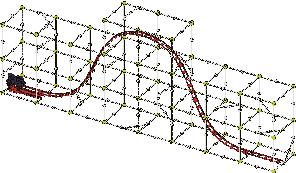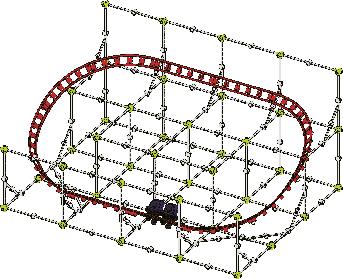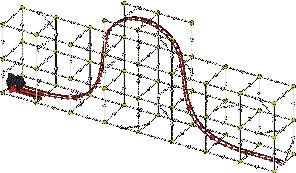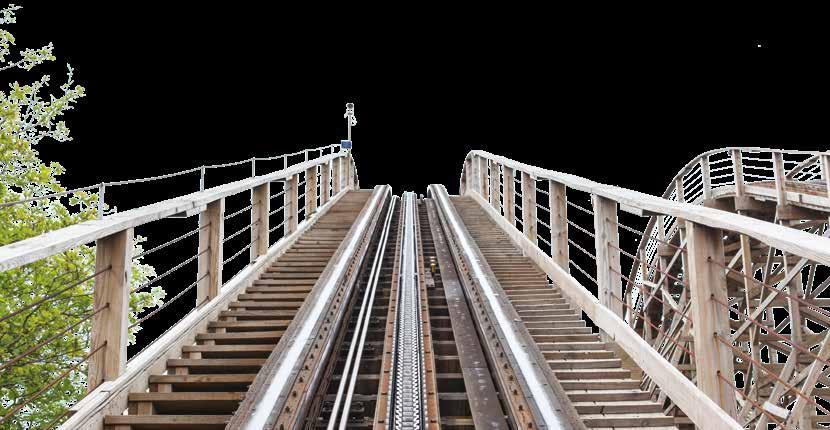
2 minute read
Experiment 14
Climbing the hills
What is the tallest hill the train can make it over?
Advertisement
You will need
– 3 Hill models from previous page and below
Here’s how
1. Launch the train over the small hill. Does the train make it over the hill? How fast is it moving on the other side of the hill?
2. Reconfigure the track with ten track pieces instead of nine. Launch the train again. Does the train make it over the hill this time? And if so, how easily? (Note: You might need to add or remove a few rods from the frame in order to accommodate the new track.)
3. Now build the tallest hill using 11 track pieces. Launch the train again. What happens this time?
What’s happening?
Unlike in experiments 3–9, in which the train begins with gravitational potential energy, here you start the train from the ground. So where does the train get the energy it needs to make it up the hill? The energy comes from elastic potential energy that is stored in the spring of the launcher. When you compress a spring over a certain distance, it gains potential energy. When the launcher is released — and allowed to return to its starting shape — the spring exerts a force on the train.
Done!
Try experiment 13, step 2.


Done!
1 x10
18 x1
Medium hill
A.
B.
C.
1 x11
18 x1
A.
13 Tall hill
C.
13
Calculating speed
Calculate the average speed of the train.
You will need
– Model pictured below
– Measuring tape, calculator, stopwatch
Here’s how
1. Connect 12 pieces of track (including the launcher track), and measure the length of the track with a tape measure. What is the length of the track? (d = ____)
2. Assemble the model pictured below, with the 12 track pieces in an oval and with the train on the track.
3. Start a stopwatch as you flick the train with your finger.
Use enough force for the train to make it all the way around the track.
4. Stop the stopwatch when the train returns to its starting position. How many seconds did the train take to make it around the track? (Δt = ____)
5. Calculate the average speed of the train by dividing the length of the track by the time it took the train to complete its journey. (average speed, v = d/Δt )
What’s happening?
Speed can be thought of as the rate at which an object covers a certain distance. However, the train’s initial position on the track is the same as its final position, so the train’s change in position — or displacement — is zero. While speed is found by dividing distance by time, velocity is found by dividing displacement by time. So the train’s average velocity during its journey is zero!






